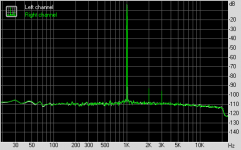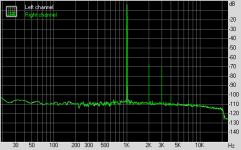I really need an amp measurement rig. Like Hugh says, the models are very useful for setting the DC points for operation. I am able to set the bias values fairly close to where I want them. I have to say that my ears agree with the euphonic harmonic profile that is predicted. This is one of the nicest sounds I have heard on headphones and more folks should try two transistor SE amp topology for headphones. Wonderful sounding.
use your soundcard
I know - I have been looking for a cost effective USB sound card with sufficiently low self THD. ARTA as well as a couple of other programs are really nice tools.
Funny that was exactly the top pick I have with my own research. I had one final concern since it is self powered via 5v from USB Bi's that might cause noise issues. But you show nice -130dB noise floor. Looks perfect. This was exactly the info I was looking for. Thanks!
This was the confirmation that I needed that this unit could work. It's on sale with XLR cable and free shipping for $99 presently so a good deal.
This was the confirmation that I needed that this unit could work. It's on sale with XLR cable and free shipping for $99 presently so a good deal.
Last edited:
It's on sale with XLR cable and free shipping for $99 presently so a good deal.
That's a steal! Where did you order from?
That's a steal! Where did you order from?
Price good for a few more days...
Focusrite Scarlett Solo (2nd Gen) USB Audio Interface CABLE KIT | KraftMUSIC.com
As built circuit with 47uF output cap, 1uF input cap, assumed 16v rail for 9vx2 Li-ion batteries. THD is now predicted to be 0.0065% at full output of 1.4 v p-p.
http://www.diyaudio.com/forums/head...lass-headamp-without-heat-16.html#post4949133
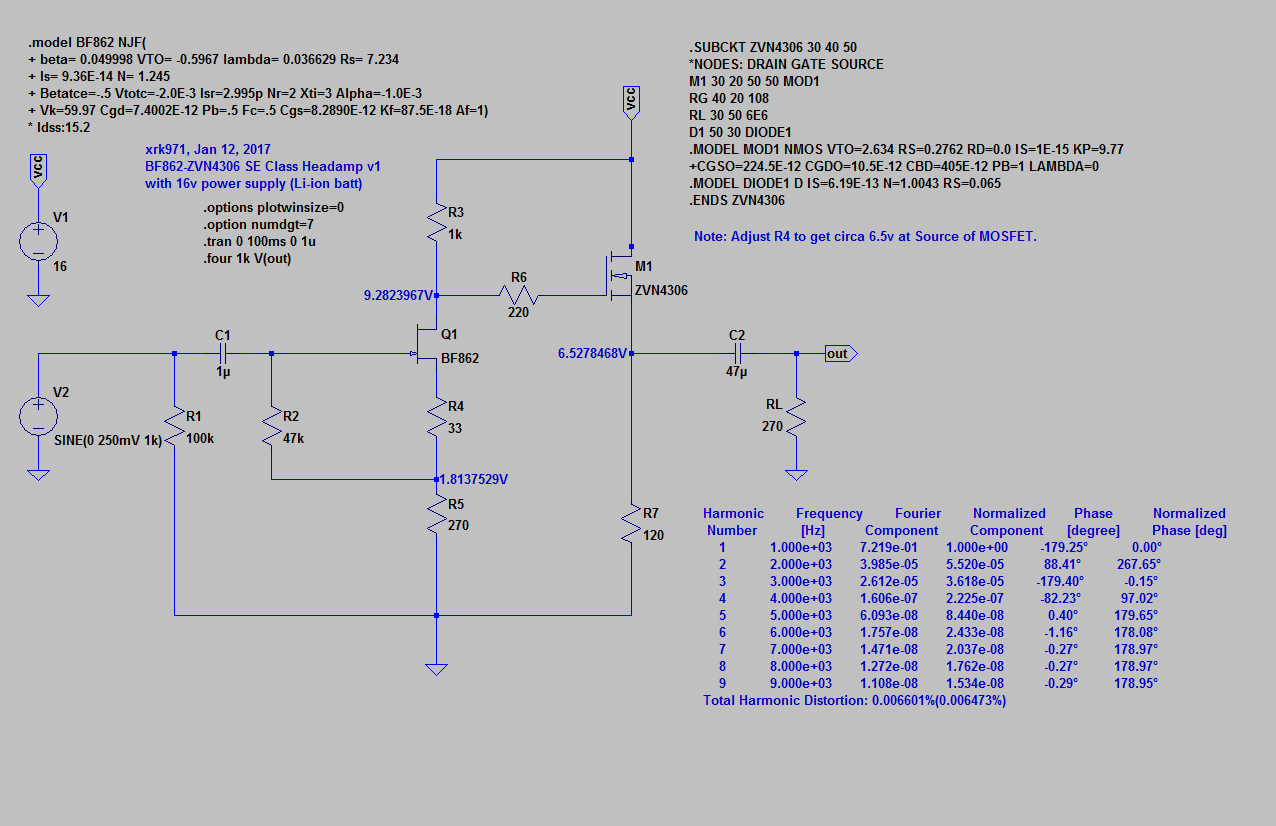
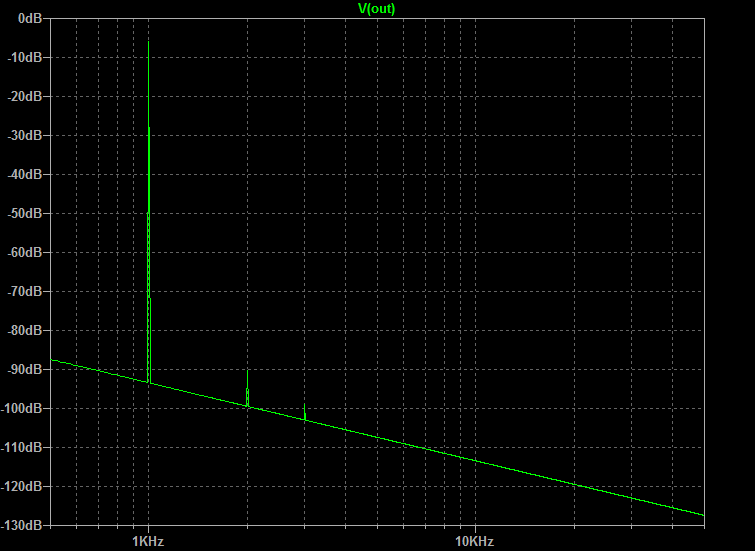
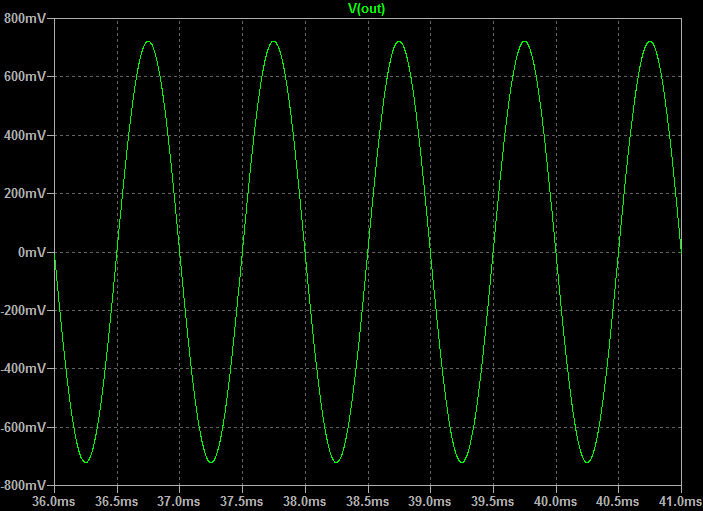
Oh, and before someone flames me for "this is predicated on a possibly bad model of the actives..." the model is from the manufacturer and has been revised once (2007) - so may be better than just a first guess from the company. Also, I have ordered a decent sound card and will measure the performance into a 270R resistive load and we will see how close we get.
http://www.diyaudio.com/forums/head...lass-headamp-without-heat-16.html#post4949133



Oh, and before someone flames me for "this is predicated on a possibly bad model of the actives..." the model is from the manufacturer and has been revised once (2007) - so may be better than just a first guess from the company. Also, I have ordered a decent sound card and will measure the performance into a 270R resistive load and we will see how close we get.
Last edited:
I really need an amp measurement rig. Like Hugh says, the models are very useful for setting the DC points for operation. I am able to set the bias values fairly close to where I want them. I have to say that my ears agree with the euphonic harmonic profile that is predicted. This is one of the nicest sounds I have heard on headphones and more folks should try two transistor SE amp topology for headphones. Wonderful sounding.
Hi X, when I was having fun with small tube amp, anatech recommended RightMark audio analyzer, a freeware. It worked great for me. You can see some screen pics here (I did not use high quality sound card, just laptop input).
http://www.diyaudio.com/forums/tubes-valves/287665-6eu7-6bq5-feedback-question-6.html
Latest News. Audio Rightmark
As built circuit with 47uF output cap, 1uF input cap, assumed 16v rail for 9vx2 Li-ion batteries. THD is now predicted to be 0.0065% at full output of 1.4 v p-p.
http://www.diyaudio.com/forums/head...lass-headamp-without-heat-16.html#post4949133



Oh, and before someone flames me for "this is predicated on a possibly bad model of the actives..." the model is from the manufacturer and has been revised once (2007) - so may be better than just a first guess from the company. Also, I have ordered a decent sound card and will measure the performance into a 270R resistive load and we will see how close we get.
I tried using RMAA software with my cheap Behringer UCA202 and here is the loopback self HD FFT - not too bad with -110dB noise floor and a couple of peaks at H2 and H3 with 15dB height. These 15dB peak values will have to be subtracted from an amp measurement:
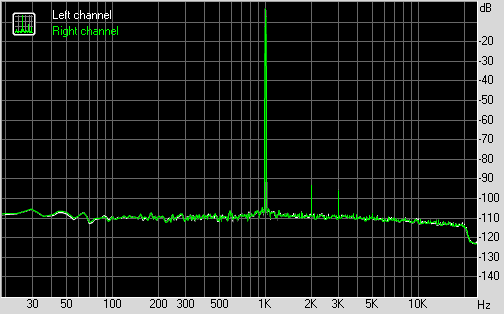
Here is the Pocket Class A BF862/ZVN4306 amp as measured using the UCA202 as the interface - with 270R load equivalent to headphonesc (amp is pretty quiet and if you subtract 15dB from H2 and H3 peaks, you get something a bit higher than the theoretically predicted FFT - but profile looks similar):

This is my first measurement with the Rightmark software - pretty easy to use but I may be missing a setting or not doing something right. It requires you to set the ampitude at a pretty high level - so that may drive distortion up higher than what one would actually listen to at. I will repeat with the Focusrite 2i2 gen2 interface when that comes in - it should b cleaner.
Attachments
Last edited:
Looks like your sims are pretty accurate. FWIW, I think you ordered the Scarlet Solo, not the 2i2. Probably the same noise specs, but just one preamp. You may have to test one channel at a time?
You are right - that is the solo but it does have two inputs one for mic (XLR)and one for guitar (TRS) so I will have to be clever about how to split signals or do one at a time.
... and if you subtract 15dB from H2 and H3 peaks, you get something a bit higher than the theoretically predicted FFT - but profile looks similar):
You can't subtract like that. You need to do a root mean square subtraction of the figures instead.
Your soundcard has loopback of -95dB H3 =10^(-95/20)=1.78e-5
Your amp measures -70dB H3 =3.16e-4
Your amp's H3 = 20*log(sqrt(3.16e-4^2-1.78e-5^2)) = -70.01dB -> the H3 contribution of your soundcard is negligible in this case, as your amp has an H3 that is 25dB (18 times) higher than the soundcard.
You are right - that is the solo but it does have two inputs one for mic (XLR)and one for guitar (TRS) so I will have to be clever about how to split signals or do one at a time.
Be careful with the inputs since they have different impedance on the Solo version. Microphone input has 3kOhm impedance while the line input has 52kOhm. If you switch the line input into the instrument mode it gets to 1MOhm. I guess it would be better for you to send the Solo back and add $30 for the 2i2, IMO.
You can't subtract like that. You need to do a root mean square subtraction of the figures instead.
Your soundcard has loopback of -95dB H3 =10^(-95/20)=1.78e-5
Your amp measures -70dB H3 =3.16e-4
Your amp's H3 = 20*log(sqrt(3.16e-4^2-1.78e-5^2)) = -70.01dB -> the H3 contribution of your soundcard is negligible in this case, as your amp has an H3 that is 25dB (18 times) higher than the soundcard.
Ok thanks for that reminder. So amp's H3 is higher than predicted. There is an interesting knob to dial here with putting a pot for R4 and dialing in the relative H3/H2 contributions.
If I'm reading the plot correctly I think I see a slightly lower distortion. The signal seems to me to be around +5dB to +6dB and the two dominant distortions are around -67dB and -70dB.
I tried using RMAA software with my cheap Behringer UCA202 and here is the loopback self HD FFT - not too bad with -110dB noise floor and a couple of peaks at H2 and H3 with 15dB height.
Help me, the UCA202 is a 16-bit device, right?
Also it is specced at 89dB SNR for D/A. How do you get 110dB?
It's my first time using RightMark. I don't know how A maybe what is shown is absolute noise level (dBm) and dynamic range is different. It is a quiet DAC according to NWaVguy.
Here is a screenshot of NWAVGuy test showing -120dB noisefloor of headphone out (which is what I was using).
NwAvGuy: Behringer UCA202 Review
%20THD%20and%20THD%2BN%5B2%5D.png)
NwAvGuy: Behringer UCA202 Review
%20THD%20and%20THD%2BN%5B2%5D.png)
- Home
- Amplifiers
- Headphone Systems
- MOSFET Source Follower Headamp
